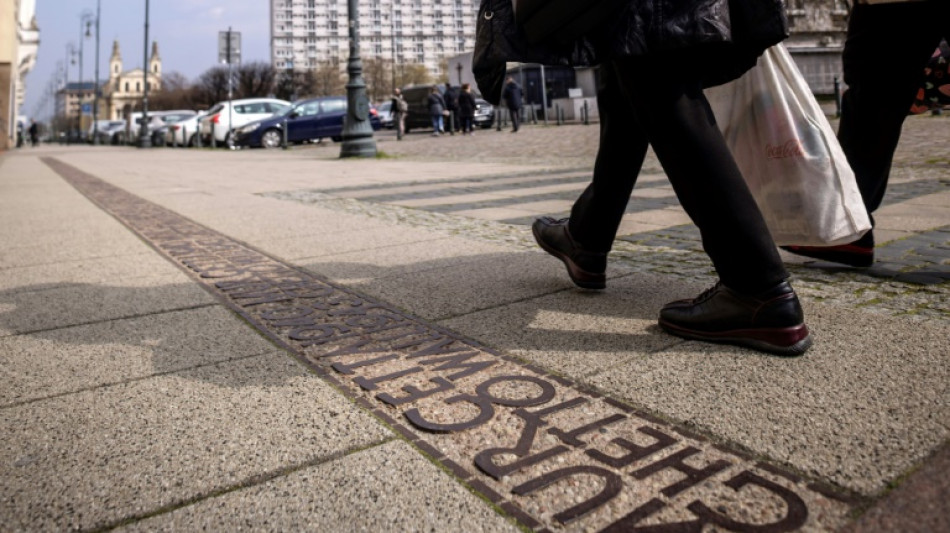
-
 'Veggie burgers' face grilling in EU parliament
'Veggie burgers' face grilling in EU parliament
-
Trio wins physics Nobel for quantum mechanical tunnelling

-
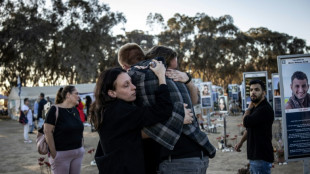 Two years after Hamas attack, Israelis mourn at Nova massacre site
Two years after Hamas attack, Israelis mourn at Nova massacre site
-
German factory orders drop in new blow to Merz
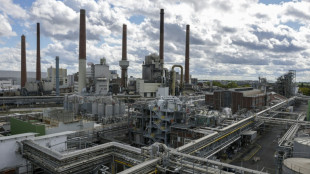
-
 Man City star Stones considered retiring after injury woes
Man City star Stones considered retiring after injury woes
-
Kane could extend Bayern stay as interest in Premier League cools
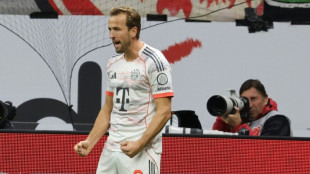
-
 Renewables overtake coal but growth slows: reports
Renewables overtake coal but growth slows: reports
-
Extreme rains hit India's premier Darjeeling tea estates

-
 Raducanu retires from opening match in Wuhan heat with dizziness
Raducanu retires from opening match in Wuhan heat with dizziness
-
UK's Starmer condemns pro-Palestinian protests on Oct 7 anniversary
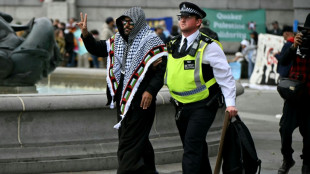
-
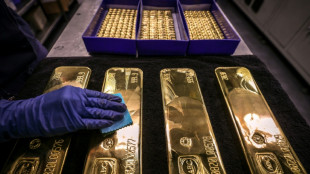 Tokyo stocks hit new record as markets extend global rally
Tokyo stocks hit new record as markets extend global rally
-
Japan's Takaichi eyes expanding coalition, reports say
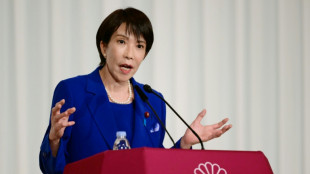
-
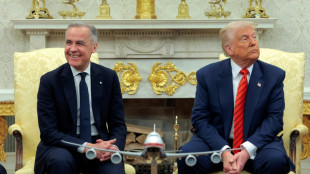 Canadian PM to visit White House to talk tariffs
Canadian PM to visit White House to talk tariffs
-
Indonesia school collapse toll hits 67 as search ends
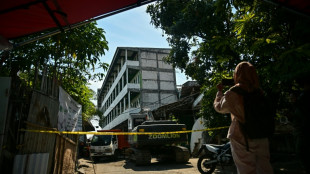
-
 Dodgers hold off Phillies, Brewers on the brink
Dodgers hold off Phillies, Brewers on the brink
-
Lawrence sparks Jaguars over Chiefs in NFL thriller
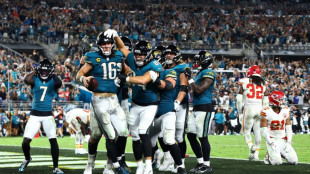
-
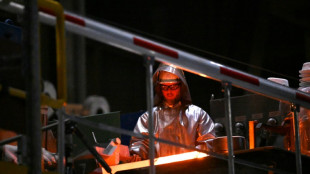 EU channels Trump with tariffs to shield steel sector
EU channels Trump with tariffs to shield steel sector
-
Labuschagne out as Renshaw returns to Australia squad for India ODIs
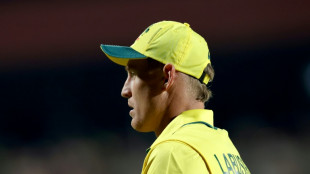
-
 Open AI's Fidji Simo says AI investment frenzy 'new normal,' not bubble
Open AI's Fidji Simo says AI investment frenzy 'new normal,' not bubble
-
Tokyo stocks hit new record as Asian markets extend global rally
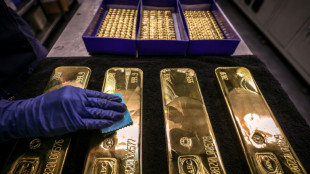
-
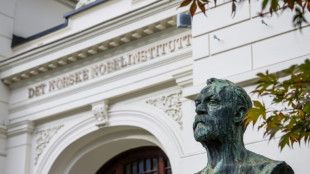 Computer advances and 'invisibility cloak' vie for physics Nobel
Computer advances and 'invisibility cloak' vie for physics Nobel
-
Nobel literature buzz tips Swiss postmodernist, Australians for prize
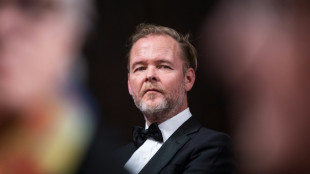
-
 Dodgers hold off Phillies to win MLB playoff thriller
Dodgers hold off Phillies to win MLB playoff thriller
-
China exiles in Thailand lose hope, fearing Beijing's long reach
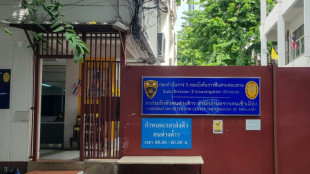
-
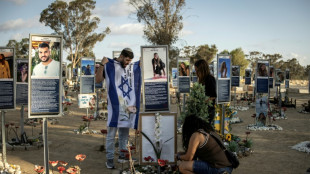 Israel marks October 7 anniversary as talks held to end Gaza war
Israel marks October 7 anniversary as talks held to end Gaza war
-
Indians lead drop in US university visas
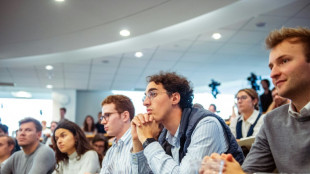
-
 Colombia's armed groups 'expanding,' warns watchdog
Colombia's armed groups 'expanding,' warns watchdog
-
Shhhh! California bans noisy TV commercials

-
 HotelRunner and Visa Partner Globally to Power Embedded and Autonomous Finance in Travel
HotelRunner and Visa Partner Globally to Power Embedded and Autonomous Finance in Travel
-
Trump 'happy' to work with Democrats on health care, if shutdown ends
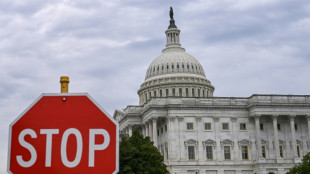
-
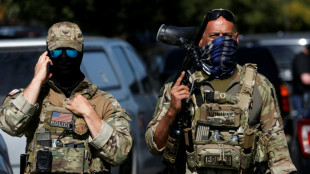 Trump says may invoke Insurrection Act to deploy more troops in US
Trump says may invoke Insurrection Act to deploy more troops in US
-
UNESCO board backs Egyptian for chief after US row
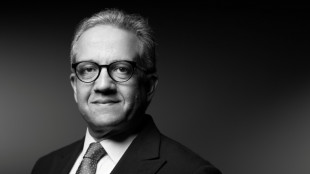
-
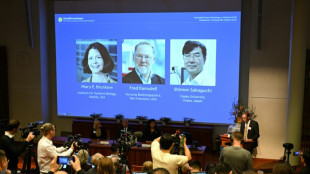 Unreachable Nobel winner hiking 'off the grid'
Unreachable Nobel winner hiking 'off the grid'
-
Retirement or marketing gimmick? Cryptic LeBron video sets Internet buzzing

-
 CAF 'absolutely confident' AFCON will go ahead in protest-hit Morocco
CAF 'absolutely confident' AFCON will go ahead in protest-hit Morocco
-
Paris stocks slide amid French political upheaval, Tokyo soars
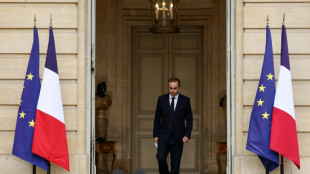
-
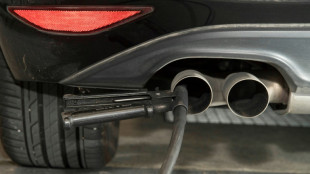 EU should scrap ban on new combustion-engine sales: Merz
EU should scrap ban on new combustion-engine sales: Merz
-
US government shutdown enters second week, no end in sight
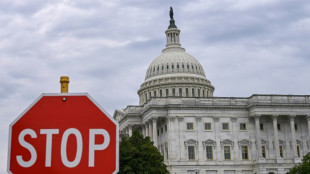
-
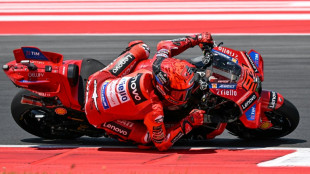 World MotoGP champion Marquez to miss two races with fracture
World MotoGP champion Marquez to miss two races with fracture
-
Matthieu Blazy reaches for the stars in Chanel debut
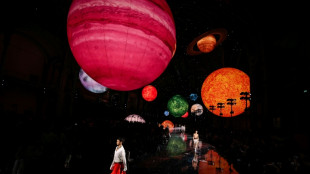
-
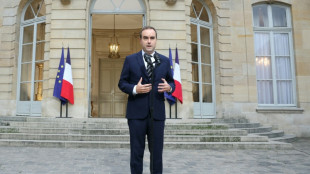 Macron gives outgoing French PM final chance to salvage government
Macron gives outgoing French PM final chance to salvage government
-
Illinois sues to block National Guard deployment in Chicago
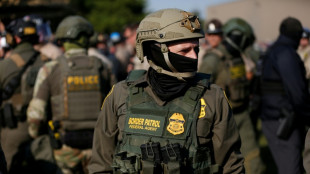
-
 Exiled Willis succeeds Dupont as Top 14 player of the season
Exiled Willis succeeds Dupont as Top 14 player of the season
-
Hamas and Israel open talks in Egypt under Trump's Gaza peace plan
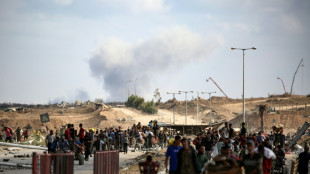
-
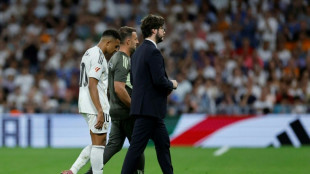 Mbappe undergoing treatment for 'small niggle' at France camp: Deschamps
Mbappe undergoing treatment for 'small niggle' at France camp: Deschamps
-
Common inhalers carry heavy climate cost, study finds
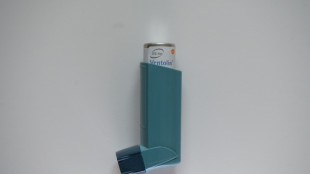
-
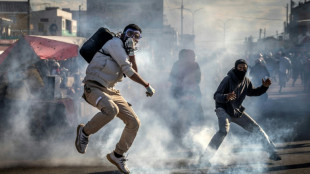 Madagascar president taps general for PM in bid to defuse protests
Madagascar president taps general for PM in bid to defuse protests
-
UEFA 'reluctantly' approves European league games in US, Australia
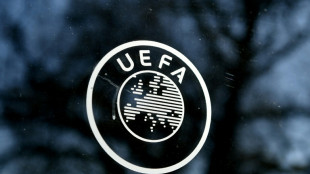
-
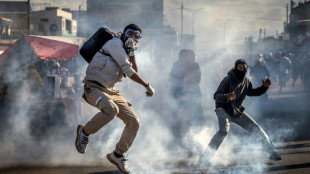 Hundreds protest in Madagascar as president to announce new premier
Hundreds protest in Madagascar as president to announce new premier
-
Greta Thunberg lands in Greece among Gaza flotilla activists deported from Israel
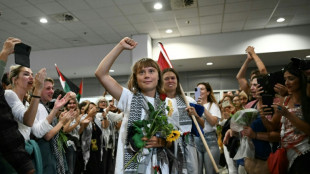

'Voices from the buried city': Warsaw ghetto memory lives on
A child's burnt shoe, a charred pram, shattered kitchenware -- the items on display in the Polish capital tell the story of how Jews in wartime Warsaw lived, loved and died.
The exhibition at the Kordegarda gallery comes just in time for the 80th anniversary of the outbreak of the Warsaw Ghetto Uprising, when Jewish fighters revolted against Nazi German terror.
Put on in partnership with the Warsaw Ghetto Museum, the show presents rare, recently unearthed traces of the World War II Jewish district.
"Warsaw is not just one city, but two: one that we see, and another one down there, underground," co-curator Jacek Konik told AFP.
"And these are, so to speak, voices from the buried city, calling from beneath our feet."
Konik led the excavations in Warsaw, at a site adjacent to the bunker where the leader of the doomed uprising, Mordechaj Anielewicz, and his comrades committed mass suicide.
When Nazi Germany invaded Poland in 1939, roughly one third of the city's population was Jewish.
A year later, the occupiers cordoned off the Jewish district to create the ghetto that no Jew could freely leave.
"These are items identical to what we could find in the non-Jewish parts of Warsaw, so it's clear that the area, separated as a ghetto, was separated artificially," Konik said.
Up to around 450,000 Jews were crowded into an area of around three square kilometres.
When the Nazi forces began deporting Jews to death camps, some of those in Warsaw put up armed resistance on April 19, 1943.
- Will to carry on -
The nearly month-long uprising was brutally crushed by the Germans, who also razed the ghetto. Its remains are still buried there, only occasionally seeing the light of day.
Among the several thousand artefacts excavated, dozens of which are exhibited, one stands out as particularly meaningful: a charred door handle with a key still stuck in the lock.
"This handle is a symbol of the well-known decree for Jews to abandon their apartments and leave the keys in the door," Konik said.
There are also some unlikely finds, such as the picture of Igo Sym, a Polish actor who collaborated with the German occupiers.
"Presumably it belonged to some young, pre-war fan of the handsome actor," Konik said.
"Unfortunately, behind the attractive appearance, there was a monster," Konik said of the star later assassinated by the Polish resistance.
All of the items testify to the will to carry on despite the horrors of antisemitism and war.
"That is perhaps what's most poignant -- that ordinary life was cut short, and now, through this exhibition, we can complete the story," Konik said.
Today, very few buildings remain from the ghetto.
One rare example is a pre-war townhouse at Chlodna street that was once home to Adam Czerniakow, tasked by the Germans to head the ghetto's Judenrat Jewish administration.
- 'Doomed to die' -
There is also photo evidence of that time, but most of it was shot by the Nazis.
"It is very annoying that we still see the ghetto through German eyes. It shouldn't be like that," Agnieszka Haska from the Polish Centre for Holocaust Research told AFP.
However, the public will soon be able to check out recently discovered photos of the ghetto taken by a Polish firefighter.
The images are part of a new exhibition at the Polin Museum of the History of Polish Jews that focuses on the fate of Jewish civilians during the uprising.
"Instead of responding to summons to turn up for transports heading towards imminent death, they remained in hiding. Their silent act of resistance was as important as armed combat," Polin said on its website.
This year's uprising commemorations -- to be attended by the Israeli and German presidents -- are also expected to shed more light on the civilian perspective.
Located just in front of the museum is the Monument to the Ghetto Heroes, a 11-metre memorial at the site of several of the uprising's armed clashes.
Haska said the monument also has an overlooked side.
"We usually see... the one of the fighting, the combatants" where visiting officials lay wreaths, she said.
"But extremely interesting is the second side of the monument, the one dedicated to the civilian experience that we want to particularly commemorate this year."
That side shows a line of civilians on their way to death.
"In other words: the elderly, the women, the children -- those who lived in the Warsaw ghetto and were doomed to die," Haska said.
L.Dubois--BTB
